
Chemical Bonds
- Subject:
- Chemistry
- Physical Science
- Material Type:
- Lecture Notes
- Author:
- Khan Academy
- Date Added:
- 06/30/2021

Chemical Bonds
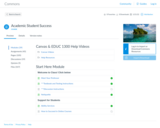
Learning Frameworks EDUC 1300 course created using Rice Open Stax College Success text
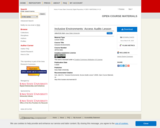
Lecture slides to accompany ARTID 569A: Inclusive Environments, an Interior Design course given at Iowa State University.
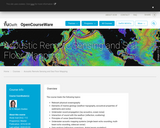
The course treats the following topics: - Relevant physical oceanography - Elements of marine geology (seafloor topography, acoustical properties of sediments and rocks) - Underwater sound propagation (ray acoustics, ocean noise) - Interaction of sound with the seafloor (reflection, scattering) - Principles of sonar (beamforming) - Underwater acoustic mapping systems (single beam echo sounding, multi-beam echo sounding, sidescan sonar) - Data analysis (refraction corrections, digital terrain modelling) - Applications (hydrographic survey planning and navigation, coastal engineering) - Current and future developments.
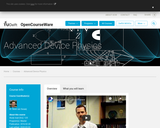
This course will focus for a large part on MOSFET and CMOS, but also on heterojunction BJT, and photonic devices.First non-ideal characteristics of MOSFETs will be discussed, like channel-length modulation and short-channel effects. We will also pay attention to threshold voltage modification by varying the dopant concentration. Further, MOS scaling will be discussed. A combination of an n-channel and p-channel MOSFET is used for CMOS devices that form the basis for current digital technology. The operation of a CMOS inverter will be explained. We will explain in more detail how the transfer characteristics relate to the CMOS design.
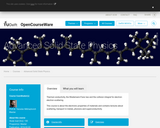
This course is about the electronic properties of materials and contains lectures about scattering, transport in metals, phonons and superconductivity.
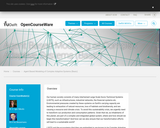
Our human society consists of many intertwined Large Scale Socio-Technical Systems (LSSTS), such as infrastructures, industrial networks, the financial systems etc. Environmental pressures created by these systems on EarthŰŞs carrying capacity are leading to exhaustion of natural resources, loss of habitats and biodiversity, and are causing a resource and climate crisis. To avoid this sustainability crisis, we urgently need to transform our production and consumption patterns. Given that we, as inhabitants of this planet, are part of a complex and integrated global system, where and how should we begin this transformation? And how can we also ensure that our transformation efforts will lead to a sustainable world? LSSTS and the ecosystems that they are embedded in are known to be Complex Adaptive Systems (CAS). According to John Holland CAS are "...a dynamic network of many agents (which may represent cells, species, individuals, firms, nations) acting in parallel, constantly acting and reacting to what the other agents are doing. The control of a CAS tends to be highly dispersed and decentralized. If there is to be any coherent behavior in the system, it will have to to arise from competition and cooperation among the agents themselves. The overall behavior of the system is the result of a huge number of decisions made every moment" by many individual agents. Understanding Complex Adaptive Systems requires tools that themselves are complex to create and understand. Shalizi defines Agent Based Modeling as "An agent is a persistent thing which has some state we find worth representing, and which interacts with other agents, mutually modifying each otherŰŞs states. The components of an agent-based model are a collection of agents and their states, the rules governing the interactions of the agents and the environment within which they live." This course will explore the theory of CAS and their main properties. It will also teach you how to work with Agent Based Models in order to model and understand CAS.

These lecture videos and corresponding notes can be used as a resource in online and Face-to-Face College Algebra course to learn content. The notes are the same notes used within the videos so students will fill out the notes as the instructor does in the video.

This course treats various methods to design and analyze datastructures and algorithms for a wide range of problems. The most important new datastructure treated is the graph, and the general methods introduced are: greedy algorithms, divide and conquer, dynamic programming and network flow algorithms. These general methods are explained by a number of concrete examples, such as simple scheduling algorithms, Dijkstra, Ford-Fulkerson, minimum spanning tree, closest-pair-of-points, knapsack, and Bellman-Ford. Throughout this course there is significant attention to proving the correctness of the discussed algorithms. All material for this course is in English. The recorded lectures, however, are in Dutch.
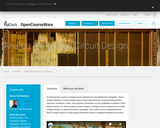
An introductory course in analog circuit synthesis for microelectronic designers. Topics include: Review of analog design basics; linear and non-linear analog building blocks: harmonic oscillators, (static and dynamic) translinear circuits, wideband amplifiers, filters; physical layout for robust analog circuits; design of voltage sources ranging from simple voltage dividers to high-performance bandgaps, and current source implementations from a single resistor to high-quality references based on negative-feedback structures.

Every applied ethics course requires some brief introduction, survey, or primer on ethical theory and moral decision making. At the same time, spending too much time on argumentation and normative ethical theory can take precious course time away from the applied issues that are the focus of the course. The Applied Ethics Primer offers a concise introduction to both basic argumentation and normative ethical theory. Somewhat more inclusive than many similar resources, this primer offers students a taste of the truly global history of ethics, while still being squarely focussed on providing practical tools for ethical decision making and is appropriate for any introductory applied ethics course.
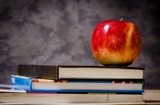
This resource contains a student activity handout, a facilitation guide, example solutions, and class notes. Students work together to discover one-to-one correspondences between various infinite sets of numbers and the set of natural numbers. At the end of this activity the compiled results of their group work form a list of infinite sets that all have the same cardinality as the set of natural numbers. Instructors may take this lesson further by discussion countably infinite versus uncountably infinite sets. This activity aligns with MATH 1332 Learning Outcome 1: Apply the language and notation of sets.
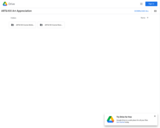
This is an exploration of visual art forms and their cultural connections for the student with little experience in the visual arts. The course includes a brief study of art history and in depth studies of the elements, media, and methods used in creative process and thought. Visual and performing arts are part of the Humanities: academic disciplines that study the human condition and, in addition to the arts, include languages, literature, law, history and religion. This course will teach students to develop a five-step system for understanding visual art in all forms based on description, analysis, meaning, context and judgment.Login: guest_oclPassword: ocl

This resource aligns with OpenStax Chemistry 2e section 2.1 and includes a mini-lecture on Atomic Theory and the 3 Laws that supported its acceptance by the scientific community and a Ted Ed video: the 2.400-year search for the atom (Theresa Doud)

This handout complements lessons on audience and purpose in writing. It offers questions and examples to help students grasp how understanding their audience and purpose shapes a piece’s content, tone, and structure.
Author: Brandi Morley
Editor: Mary Landry, C. Anneke Snyder
Supervisor: Terri Pantuso
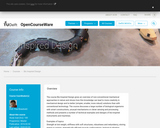
The course Bio-Inspired Design gives an overview of non-conventional mechanical approaches in nature and shows how this knowledge can lead to more creativity in mechanical design and to better (simpler, smaller, more robust) solutions than with conventional technology. The course discusses a large number of biological organisms with smart constructions, unusual mechanisms or clever sensing and processing methods and presents a number of technical examples and designs of bio-inspired instruments and machines.
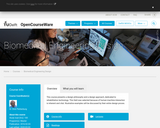
This course presents a design philosophy and a design approach, dedicated to rehabilitation technology. This field was selected because of human-machine interaction is inherent and vital. Illustrative examples will be discussed by their entire design process
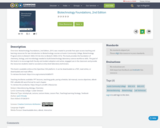
Biotechnology Foundations, 2nd Edition, 2019, was created to provide free open-access teaching and learning resources for two Introduction to Biotechnology courses at Austin Community College, Biotechnology Program (Intro to Biotech I BIOL1414 & Intro to Biotech II BIOL1415). This book provides the foundation of chemistry, biology, and microbiology needed to build biotechnology laboratory science workforce skills. The goal of this book is to encourage both faculty and student adoption and active, engaged use in the classroom and provide the resources students need to succeed as entry-level laboratory technicians.

The Boundless Art History textbook is a college-level, introductory textbook that provides an overview of Art History from pre-history through to modern global art.
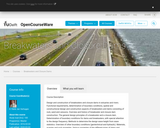
Design and construction of breakwaters and closure dams in estuaries and rivers. Functional requirements, determination of boundary conditions, spatial and constructional design and construction aspects of breakwaters and dams consisting of rock, sand and caissons.